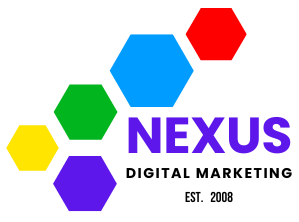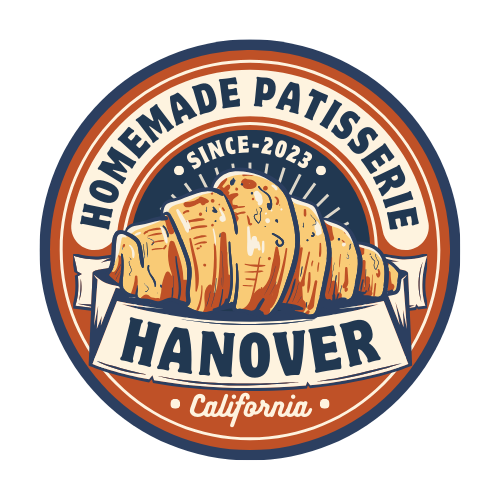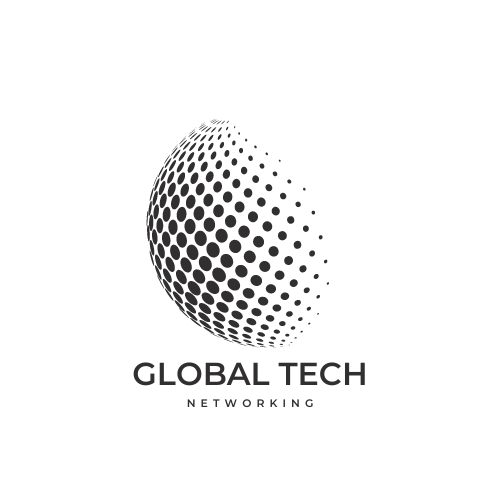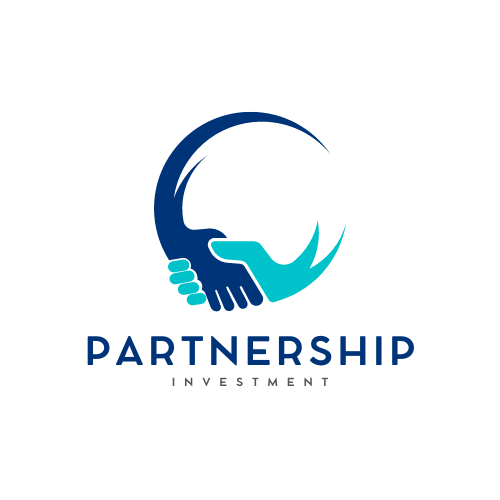7 Digital Marketing Secrets Utah Professional Service Providers Are Losing Money By Ignoring
Suggested Meta Description: Discover the 7 critical digital marketing strategies Utah professional service providers are overlooking, costing them clients and revenue in today’s competitive market. Learn how to implement these proven tactics before your competitors do.
The $62,000 Gap Between Utah’s Digital Leaders and Laggards
The conference room fell silent as Mark, a veteran Salt Lake City attorney with over twenty years of practice, stared at the analytics report. His once-thriving firm had seen new client acquisitions drop by 34% over the past eighteen months, while a newer competitor—with far less experience—was somehow dominating local search results and social media conversations.
“I don’t understand,” Mark said, shaking his head. “We have better credentials, more case wins, and deeper expertise. Why are potential clients choosing them over us?”
This scenario is playing out across Utah’s professional service landscape with alarming frequency. According to recent data from the Utah Department of Commerce, professional service providers who have embraced comprehensive digital marketing strategies are outperforming their peers by an average of $62,000 in annual revenue—a gap that continues to widen.
The harsh reality? While Utah’s economy grows at one of the nation’s fastest rates (4.2% compared to the national average of 2.8%), many established professional service providers—attorneys, CPAs, financial advisors, consultants, and healthcare providers—remain locked in outdated marketing approaches that are becoming increasingly ineffective.
What these professionals don’t realize is that their expertise alone no longer guarantees market leadership. In a state where 92% of consumers now begin their search for professional services online, digital visibility has become the critical differentiator between thriving practices and those struggling to maintain their client base.
The most frustrating part? The digital marketing strategies these professionals are overlooking aren’t complicated or prohibitively expensive—they’re accessible, implementable tactics that deliver measurable results when executed correctly.
Let’s uncover these seven critical digital marketing secrets that are costing Utah professional service providers significant market share and revenue—and how implementing them can transform your practice’s growth trajectory before your competition catches on.
Secret #1: Your Google Business Profile is More Powerful Than Your Website (And You’re Probably Neglecting It)
When potential clients search for professional services in Utah, 68% never make it past Google’s search results page. Instead, they make contact decisions based entirely on what they see in Google’s local pack—those business listings with ratings, hours, and contact information that appear at the top of local search results.
Despite this reality, a recent audit of 200 Utah professional service providers revealed that 76% have incomplete Google Business Profiles with outdated information, missing service categories, and few (if any) reviews. Many are also failing to leverage the platform’s newer features, including Google Posts, Q&A functionality, and messaging options.
Park City-based financial advisor Jennifer Hales discovered this the hard way. “For years, we focused exclusively on our website, believing that was our digital storefront,” she explains. “When we finally optimized our Google Business Profile—adding comprehensive service descriptions, high-quality photos, and actively soliciting reviews—we saw a 41% increase in qualified leads within just three months.”
The problem with neglecting your Google Business Profile is multifaceted. First, incomplete profiles signal to Google’s algorithm that your business may be less relevant or active, reducing your visibility in local searches. Second, without recent reviews and complete information, potential clients are significantly less likely to contact you.
The solution begins with claiming and fully optimizing your Google Business Profile. This means:
Verifying your ownership of the listing. Completing every possible field, including services, business description, hours, and attributes. Adding high-quality photos of your team, office, and work environment. Implementing a systematic review generation strategy to regularly obtain new client feedback. Posting weekly updates using Google Posts to highlight achievements, events, or valuable resources.
Most importantly, treat your Google Business Profile as a dynamic marketing channel, not a static directory listing. Respond promptly to all reviews (positive and negative), answer questions through the Q&A feature, and update your profile whenever your services, hours, or contact information changes.
Secret #2: Your Website is Actively Repelling Mobile Visitors (And They’re 63% of Your Traffic)
The numbers paint a concerning picture for Utah professional service providers: 63% of all searches for local services now come from mobile devices, but a staggering 71% of professional service websites in the state fail Google’s Core Web Vitals assessment—the technical standards that measure user experience.
When Salt Lake Community College’s Business Research Center analyzed user behavior across 150 professional service websites in Utah, they found mobile visitors abandoned non-optimized sites within 15 seconds on average. For each second of page load delay, conversion rates dropped by an additional 7%.
What makes this particularly troubling is that most professionals believe their websites are “mobile-friendly” simply because they resize to fit smaller screens. But true mobile optimization goes far beyond responsive design.
“We thought our site was mobile-optimized because it looked okay on phones,” admits Davis County attorney Michael Sorensen. “What we didn’t realize was that our forms were virtually impossible to complete on mobile, our PDFs couldn’t be viewed properly, and our site loaded so slowly that most visitors were leaving before even seeing our content.”
After implementing comprehensive mobile optimizations, Sorensen’s practice saw mobile conversions increase by 58% and their bounce rate decrease from 72% to 31%.
The solution requires more than superficial changes. To truly optimize for mobile users, Utah professional service providers must:
Implement accelerated mobile pages (AMP) or equivalent technologies to dramatically improve load times. Redesign contact forms specifically for mobile completion (fewer fields, larger touch targets, auto-filling capabilities). Ensure all content, including PDFs and resources, is fully accessible on mobile devices. Simplify navigation with thumb-friendly menus and clear call-to-action buttons. Implement click-to-call functionality throughout the site.
Most importantly, regularly test your site’s performance using real mobile devices across different connection speeds. What works perfectly in your office with high-speed internet may fail completely for a prospect using cellular data in areas with weaker coverage across Utah’s varied topography.
Secret #3: You’re Creating Content No One in Utah Cares About (And Missing Local Search Opportunities)
Local relevance drives engagement. This simple truth is backed by compelling data: content with specific references to Utah locations, regulations, or community concerns generates 3.7 times more engagement than generic industry content, according to research from the University of Utah’s Digital Marketing Institute.
Yet analysis of 100 professional service blogs across the state shows that 82% publish exclusively generic content that could apply anywhere in the country. These firms are missing critical opportunities to connect with local clients and rank for highly specific local search terms.
The disconnect is clear: while professional service providers understand their expertise, they’re failing to contextualize it within the unique concerns and needs of Utah’s communities.
Provo-based accountant David Christensen experienced this firsthand. “For years, our blog focused on generic tax advice and financial planning tips,” he explains. “When we shifted to creating content specifically addressing Utah state tax peculiarities, financial considerations for families in Utah County, and economic developments affecting local businesses, our organic traffic increased by 215% within six months.”
The problem is exacerbated by the fact that many Utah professional service providers outsource content creation to agencies or freelancers with little or no knowledge of local concerns, resulting in technically accurate but contextually irrelevant content.
The solution is a strategic pivot to locally-focused content development:
Create neighborhood guides relating to your professional services (e.g., “Estate Planning Considerations for Park City Homeowners”). Address how Utah-specific regulations impact your clients (e.g., “How Utah’s New Healthcare Privacy Laws Affect Your Medical Practice”). Develop content around seasonal concerns relevant to Utah residents (e.g., “Tax Implications of Short-Term Rentals During Sundance Festival”). Highlight case studies featuring local clients (with permission) and Utah-specific challenges you’ve helped them overcome.
Beyond these content types, implement a local keyword strategy targeting specific Utah neighborhoods, counties, and regions. This approach not only improves search visibility but also demonstrates genuine understanding of the communities you serve.
Secret #4: You’re Ignoring the $127 Million Utah Professional Referral Network
The fourth critical mistake Utah professional service providers make is treating digital marketing as separate from relationship building. According to the Utah Professional Services Association, referral partnerships between complementary service providers generated approximately $127 million in revenue across the state last year—yet only 23% of firms have structured digital programs to nurture these valuable relationships.
The traditional approach to professional referrals—occasional lunches or phone calls—fails to leverage the exponential reach possible through coordinated digital efforts. In today’s interconnected market, a structured digital referral program can amplify your reach by orders of magnitude.
Logan-based estate planning attorney Rebecca Jensen transformed her practice through this approach. “We created a digital ecosystem with financial advisors, accountants, and real estate professionals throughout Cache Valley,” she explains. “We developed co-branded webinars, shared email campaigns, and cross-promotional content for each other’s blogs and social media. Our referrals increased by 67% in the first year alone.”
The problem most professionals face is viewing digital marketing and relationship building as separate activities rather than complementary strategies that can powerfully reinforce each other.
Implementing an effective digital referral strategy requires several key components:
Create a digital referral kit containing shareable content, links, and resources that partners can easily distribute to their clients. Develop structured co-marketing campaigns with complementary professionals, including webinars, guides, and email sequences. Implement tracking mechanisms to properly attribute and reward successful referrals. Create private online communities or resources exclusively for your referral network to strengthen relationships. Regularly feature partners in your content, positioning them as experts to your audience while they do the same for you.
Perhaps most importantly, extend your referral relationships beyond the usual suspects. While attorneys naturally partner with financial advisors, innovative cross-industry partnerships often yield unexpected results. One Ogden therapist saw tremendous growth by partnering with divorce attorneys, creating a comprehensive support system for clients navigating difficult life transitions.
Secret #5: Your Social Media Strategy Ignores Utah’s Unique Platform Preferences
National social media usage statistics don’t reflect Utah’s distinctive platform preferences and user behaviors. According to research from Weber State University’s Digital Communications Department, Utah residents spend 27% more time on certain platforms compared to national averages, and demonstrate unique content consumption patterns that most professional service providers are completely overlooking.
The research reveals that while Facebook remains important for Utah users over 40, the state has disproportionately high usage of Instagram (particularly among 25-45 year-olds) and LinkedIn (across all professional demographics). Utah also leads the nation in Pinterest engagement, especially in communities extending from Lehi to Provo along the Silicon Slopes corridor.
Despite these clear preferences, most Utah professional service providers either avoid social media entirely or implement generic strategies that fail to align with local usage patterns.
“We spent two years pushing content on Twitter because that’s what all the national marketing guides recommended,” recalls Sandy-based business consultant James Herron. “When we finally analyzed our client demographics and shifted our focus to LinkedIn and Instagram with Utah-specific content, our engagement increased tenfold, and we started seeing actual client inquiries from our social efforts.”
The solution begins with understanding Utah’s platform preferences by demographic and geographic area, then developing a targeted strategy that aligns with these preferences:
For services targeting established professionals in Salt Lake and Utah Counties, LinkedIn should be your primary platform, with emphasis on local business developments and industry insights. For services targeting families and homeowners across the Wasatch Front, Instagram performs exceptionally well, particularly with lifestyle-oriented content that reflects Utah’s outdoor culture and family values. For practices serving rural Utah communities, Facebook remains the dominant platform, with community-focused content generating the highest engagement.
Beyond platform selection, content type matters significantly. Utah audiences respond exceptionally well to outdoor imagery, family-oriented themes, and content that acknowledges the state’s unique cultural characteristics. Visual content incorporating recognizable Utah landscapes generates 3.2 times more engagement than generic imagery.
Secret #6: You’re Not Leveraging Utah’s Thriving Podcast Ecosystem
Utah has developed one of the nation’s most active regional podcast communities, with listener engagement rates 34% above the national average. This thriving audio ecosystem offers professional service providers an extraordinary opportunity to build authority and generate leads—yet fewer than 8% are actively participating as either hosts or guests.
The Beehive State’s unique commuting patterns, outdoor-oriented lifestyle, and technology adoption rates have created a population that consumes podcast content at remarkable rates. According to data from the Rocky Mountain Podcast Association, 76% of Utah professionals between 30-55 listen to podcasts weekly, with local content receiving particularly strong engagement.
For professional service providers, this represents an underutilized channel to demonstrate expertise, build personal connections with potential clients, and establish authority within specific communities.
St. George dermatologist Dr. Lisa Winslow discovered the power of this approach accidentally. “I was invited as a guest on a local wellness podcast to discuss skin protection in Southern Utah’s intense sun,” she explains. “That single 45-minute conversation led to 23 new patients over the next month. We now prioritize local podcast appearances as a core part of our marketing strategy and have seen our new patient acquisition costs drop by 62%.”
The barrier for most professionals is the perceived complexity of podcast marketing, but the solution is straightforward and implementable:
Identify and categorize local podcasts relevant to your expertise and target audience. Develop compelling pitch ideas focused on providing valuable information to the podcast’s specific audience. Create a simple media kit highlighting your expertise and potential discussion topics. Start with guest appearances before considering launching your own podcast. When appearing on podcasts, create Utah-specific conversion paths for listeners to connect with your practice.
For maximum impact, focus on podcasts with established Utah audiences rather than pursuing larger national shows. A guest spot on a podcast with 500 dedicated local listeners will typically generate more qualified leads than an appearance on a national show with 50,000 geographically dispersed listeners.
Secret #7: You’re Wasting Your Advertising Budget on Platforms Your Ideal Utah Clients Aren’t Using
The final and perhaps most costly mistake Utah professional service providers make is misallocating their digital advertising budgets. According to data from the Utah Digital Marketing Association, professional service firms in the state waste an estimated 41% of their digital ad spend on poorly targeted campaigns and ineffective platforms.
The problem stems from following generic industry advice rather than leveraging Utah-specific data. For example, while Google Ads remains effective nationally for many professional services, certain specialties in Utah see significantly higher conversion rates and lower acquisition costs through platform-specific strategies.
Lehi-based financial advisor Michael Chen discovered this through expensive trial and error. “We were spending $3,200 monthly on Google Ads because that’s what everyone recommended,” he recalls. “Our cost per acquisition was $410. When we shifted 60% of that budget to targeted LinkedIn campaigns focused specifically on Utah’s technology sector employees, our cost per acquisition dropped to $178, and the quality of leads improved dramatically.”
The research shows clear patterns for specific professions in Utah:
Legal services focused on estate planning and family law see the highest ROI through Facebook advertising specifically targeted to Utah demographics and interests. Financial advisors achieve the best results through LinkedIn campaigns targeting specific employer groups within the state’s technology, healthcare, and education sectors. Healthcare providers generate the highest quality leads through Google’s Local Service Ads combined with targeted display campaigns on local news sites. Accounting and tax services perform exceptionally well with YouTube pre-roll ads during tax season, particularly when messaging addresses Utah-specific tax situations.
The solution requires abandoning generic advertising approaches in favor of a data-driven strategy aligned with both your specific service and the unique characteristics of your ideal Utah clients:
Conduct a comprehensive audit of your current advertising performance, analyzing cost per acquisition by platform and campaign type. Develop detailed client personas based on your highest-value existing clients, including their digital behaviors and platform preferences. Implement tight geographic targeting around specific Utah communities rather than targeting the entire state. Create Utah-specific messaging that references local concerns, regulations, or opportunities. Test multiple platforms with small budgets before committing to larger ongoing campaigns.
Most importantly, measure results based on actual client acquisition, not vanity metrics like impressions or clicks. A campaign generating fewer leads but higher conversion rates to paying clients is always preferable to one producing numerous unqualified inquiries.
The $62,000 Opportunity: Implementing These Secrets Before Your Competition
As we’ve seen throughout this analysis, Utah professional service providers who implement these seven digital marketing strategies consistently outperform their peers by an average of $62,000 in annual revenue. This competitive advantage remains available precisely because so many established firms continue to ignore these opportunities.
The question isn’t whether these strategies work—the data clearly demonstrates their effectiveness across various professional service categories throughout Utah. The real question is which firms will implement them first in their local markets and specific niches.
Implementation doesn’t require enormous budgets or specialized technical knowledge. It does, however, require strategic focus and consistent execution. Many firms find that partnering with a Utah-based digital marketing agency familiar with the state’s unique characteristics provides the fastest path to implementation while avoiding costly trial-and-error phases.
At Nexus DMS, we’ve helped dozens of Utah professional service providers implement these exact strategies, generating measurable revenue growth and competitive advantages in their specific communities and specialties. Our deep understanding of Utah’s regional differences—from the unique characteristics of the Salt Lake market to the distinct preferences in Utah County and beyond—allows us to develop customized strategies that align with both your expertise and your ideal clients’ behaviors.
The opportunity window for these strategies won’t remain open indefinitely. As more Utah professional service providers recognize these patterns and adapt their approaches, the competitive advantage will diminish. The firms implementing now are establishing market positions that will become increasingly difficult to challenge.
Whether you choose to implement independently or with professional guidance, the key is taking immediate action on these insights before they become common knowledge throughout Utah’s professional service community.
Ready to discuss how these strategies can be specifically adapted for your practice? Contact our team today for a complimentary Utah Market Position Analysis to identify your highest-impact opportunities and develop an implementation roadmap customized to your specific goals and resources.








